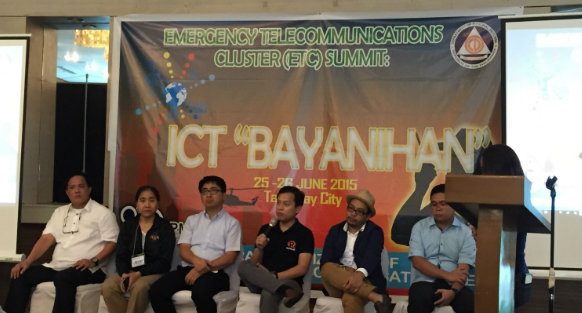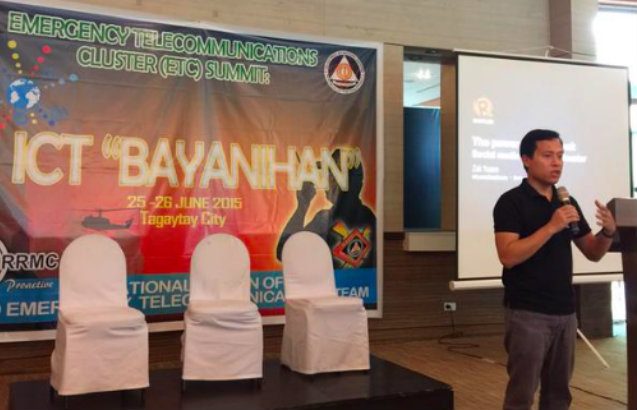SUMMARY
This is AI generated summarization, which may have errors. For context, always refer to the full article.

TAGAYTAY CITY, Philippines – To manage information and communication technology (ICT) before, during, and after disasters, the Office of Civil Defense (OCD) forms a rapid emergency telecommunications team among its different stakeholders.
This effort was launched during the “ICT Bayanihan Summit 2015,” a 2-day activity that gathered experts from different sectors to immediately address ICT needs in disaster risk reduction and management and to operationalize the creation of a Rapid Emergency Telecommunications Team (RETT).
Communication and information prove to be crucial in disasters. The Typhoon Yolanda (Haiyan) experience in November 2013 underscored the need for a more robust deployment of national government assets, especially on emergency communications, for immediate action on the ground. (READ: Access to information: How it can help prevent disasters)
Rapid emergency telecommunications team
According to Lt. Col. Edwin Sadang of the OCD, the RETT will function as a rapid deployment team of the Emergency Telecommunications Cluster of the National Disaster Risk Reduction and Management Council (NDRRMC). The team will ensure integrated communication flow from the national down to the local level and vice-versa.
“The RETT is envisioned to have ICT resources to address the communications and information needs of the operation centers. It is also established to facilitate communications protocol before, during and after disasters,” Sadang said.
He added: “That is why we tapped various stakeholders and experts from different sectors to form this team.”
‘Timely information is crucial’
In her keynote speech, Department of Social Welfare and Development (DSWD) assistant secretary Vilma Cabrera underscored the importance of ICT in disaster operations through the formulation of a deployable rapid emergency telcomms team.
“Emergency Telecommunications (ET) as a cluster in the NDRRMC covers a broad range of areas. Forming the RETT means that we are serious in saving lives, facilitating recovery and rehabiliation in the quickest possible time,” she said.
For Philippine Disaster Recovery Foundation’s Irwin Gabriel Lopez, the private sector, especially those in the telecommunications business, has an important role to play in harnessing information and communications technology in disaster management. (READ: Telcos aid gov’t agencies, LGUs as Typhoon Ruby nears)
“Coming from the private sector, I believe we are the catalyst in this initiative. We have an important role to play in disaster management. It is important for the government and private sector to foresee and jointly address the problems beforehand especially in using ICT for disaster management,” Lopez said.
“In times of disasters every second counts. Those systems need to be in place before a disaster,” he added.
Technology, social media and disasters

During the two-day summit, Rappler presented Project Agos – an online collaborative platform on disaster risk reduction and climate change adaptation – which is a member of REET.
Zak Yuson, Director of Move.PH – Rappler’s citizen engagement arm, highlighted the need for government, private sector and civil society to work together on breaking down information barriers especially during disasters.
In the past months, Rappler’s Project Agos team has gone around different provinces in the country to help local government units improve their disaster communication systems.
Yuson also cited Project Agos’ experience in recent typhoons where social media and technology played key roles in delivering information and in saving lives. (READ: #Project Agos: Letter to Baby Yesha, daughter of social media) – Rappler.com
Add a comment
How does this make you feel?
There are no comments yet. Add your comment to start the conversation.